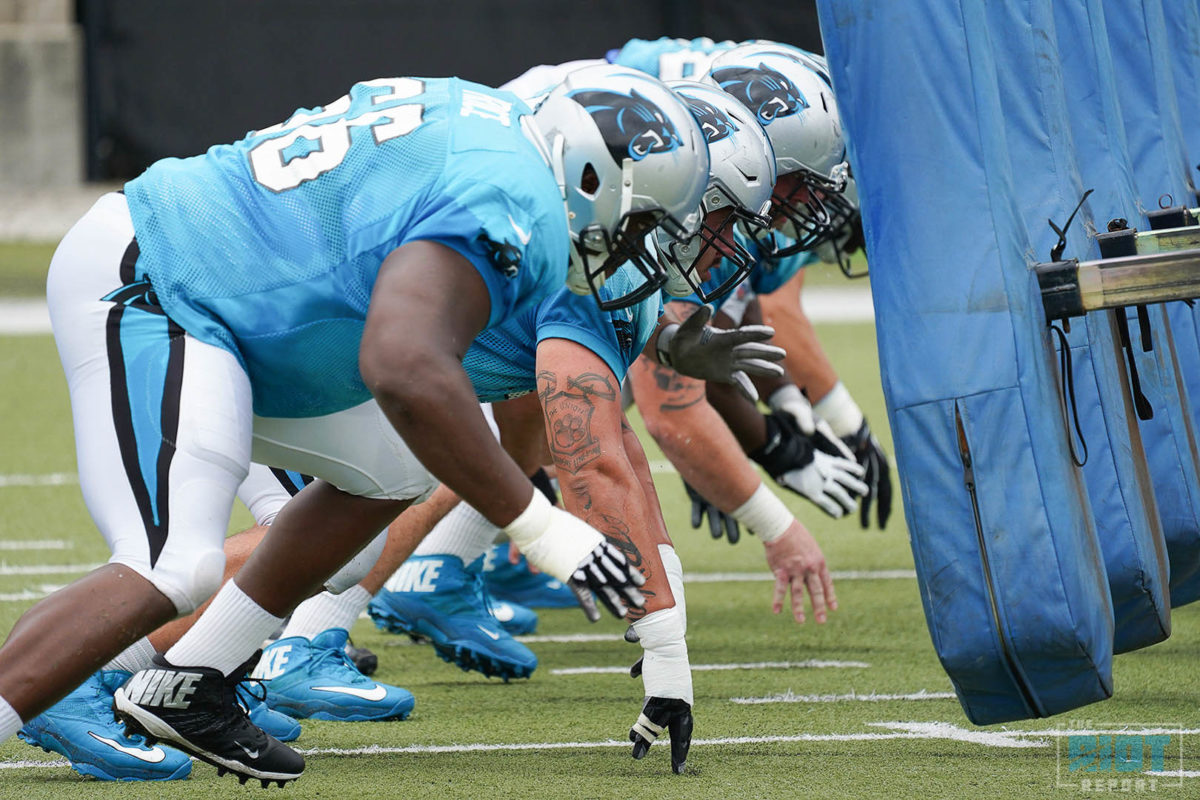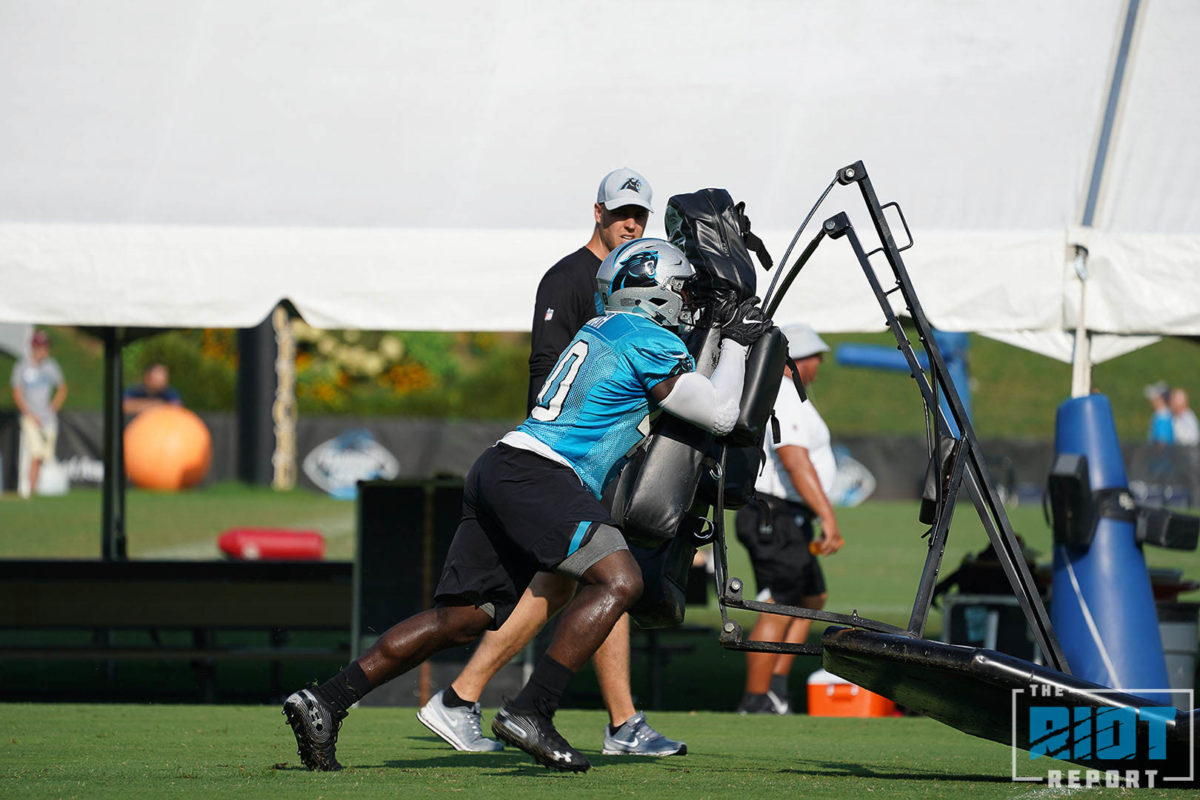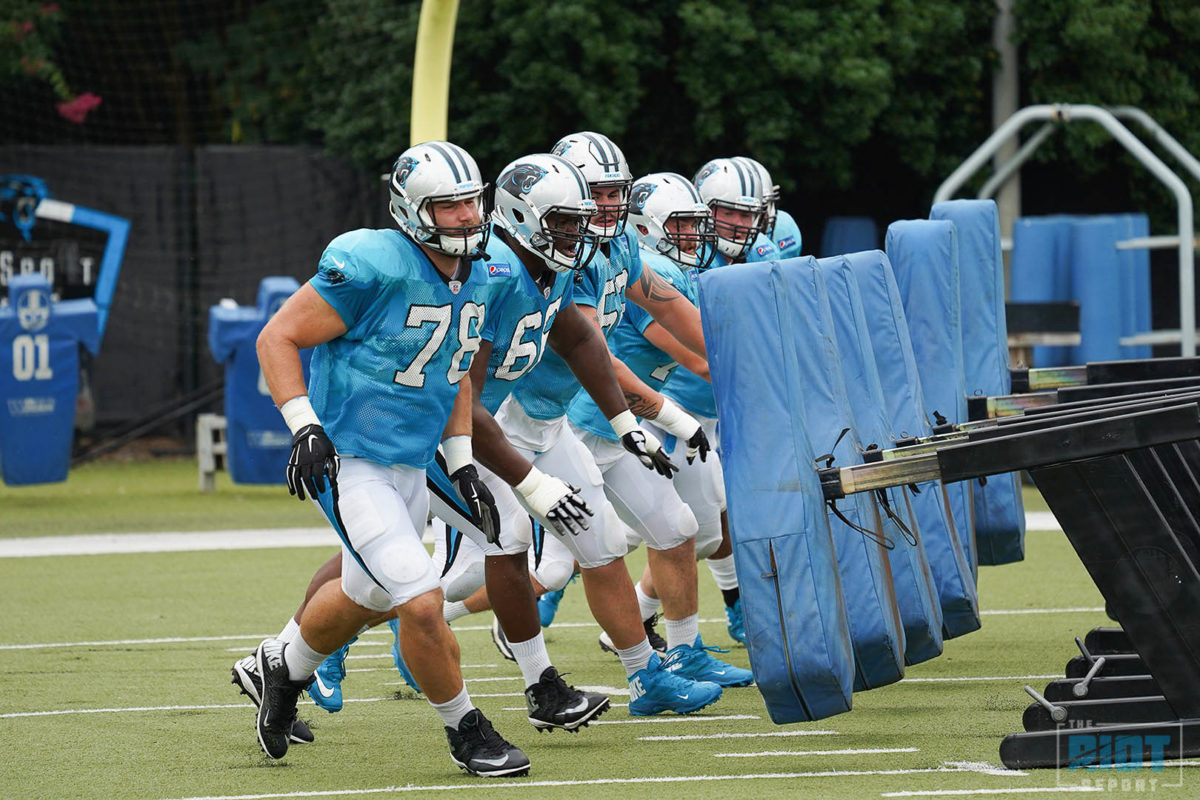“Football is two things. It’s blocking and tackling. I don’t care about formations or new offenses or tricks on defense. You block and tackle better than the team you’re playing, you win.”
-Vince Lombardi
Another week, another potential new starter on the offensive line for the Carolina Panthers.
After losing both Daryl Williams and Amini Silatolu over the first three weeks of training camp, the team may be without starting left tackle Matt Kalil for this week’s preseason matchup with the New England Patriots; Kalil has missed the last two days of practice with knee soreness, the same ailment that kept him out of a practice session in Spartanburg earlier in camp. Ron Rivera said Monday after practice that Kalil was being evaluated by the team and added that he was “absolutely concerned” with the prospect of losing three presumed starters on the offensive line.
“We’ve got a whole bunch of guys who are showing us that they potentially could be giving us some depth going forwards,” Rivera said, mentioning Taylor Moton, Jeremiah Sirles, Blaine Clausell, Brendan Mahon and others as possible options up front. “The list can go on and on, but you’d much rather have some continuity with the guys that are projected starters.”
Veteran lineman Sirles, who Rivera has called a Swiss Army Knife in the past, has taken most of the reps at right tackle with the first team this week in practice as second-year lineman Taylor Moton has kicked from the right side to the left side. With Greg Van Roten the leader to start at left guard, that would leave Ryan Kalil, who has missed over half of the games the past two seasons, and Trai Turner as the only starters who had that job when camp began.
“We’ve got some guys that are able to step in and step up and make stuff happen,” Luke Kuechly said about the group he goes against every day in practice. “Coach Matsko and Travelle [Wharton] do a good job with those guys – obviously, you miss having Daryl and Amini, who was playing really well, hopefully we can get [them] back quick; but those guys step up, they learn quick and get coached up really well – we’re fortunate to have guys like Greg and Taylor and all of those guys can step in and do a good job.”

But it’s not only the offensive line that handles the blocking up front – it’s a combination of the offensive line, tight end and, moreso this year than last year, the fullback slot.
Rivera calls blocking from the tight end position “a lost art” – it’s something that most tight ends don’t learn in their college program as they’re asked to be mostly pass catchers; a team like the Panthers expects so much blocking from their tight ends, which is one of the reason why Armah has been working with Tight Ends Coach Pete Hoener so closely during camp as opposed to with the running backs during positional drills. It’s the same reason why Chris Manhertz said last year that lining up in the backfield and blocking was part of being a tight end in the Panthers’ offense – it’s not a suggestion, it’s a requirement.
“I’ll tell you, there’s one thing our tight ends have done is they work on blocking,” said Rivera. “I think Pete Hoener does a tremendous job in terms of getting his guys prepared to play; he works with Alex Armah as well on some of the technique stuff as well and that’s a really big deal for us, because we do ask those guys to do a lot of blocking.”
“It’s kind of neat because I’ve always been a guy that likes fullbacks – seeing what we’ve gotten out of Alex [Armah] and what we’ve gotten out of Ian [Thomas] really has been good for us as a football team,” Rivera said about the “dirty work” he’s seen, including two key blocks that sprung Christian McCaffrey Friday night for a 71-yard touchdown.
Armah’s growth has been noticed by players around the team, with McCaffrey calling the second-year former defensive end the most improved player on the team from last season.

Successful blocking doesn’t necessarily stem completely from hand placement and weight balance, a lot of it comes from communication up front, something that new running back CJ Anderson is trying to bring from his former team.
“It’s on us too in the backfield,” said Anderson after practice this week. “Just hearing the communication from the running back to the o-line level, they’ve never had it and it’s something that I’m used to – I just try to keep the o-line involved with what I see and try to put the ball in the right spots and help the team as a unit move forward.”
“After every series, I’m going to go to the o-line and I’m going to tell ’em – certain runs, we’re going to look at the pictures together [and] we’re going to talk about certain things and be accountable; if I messed up or if they messed up, so we can be on the same page [and] our run game can be efficient.”


